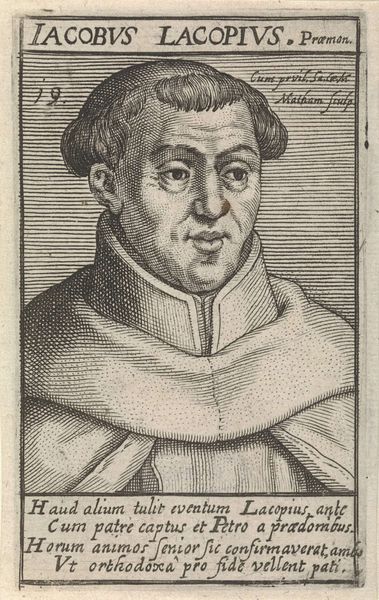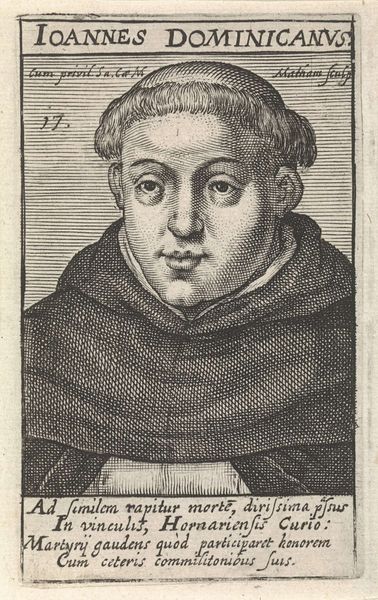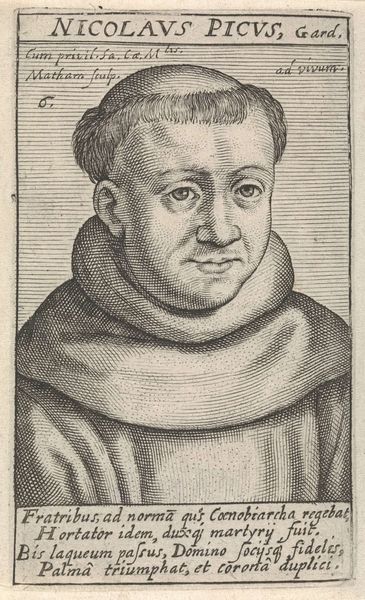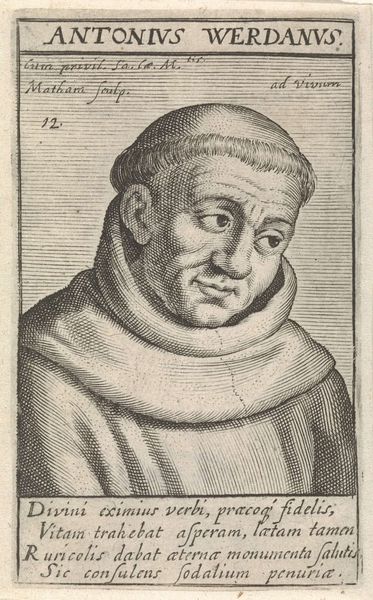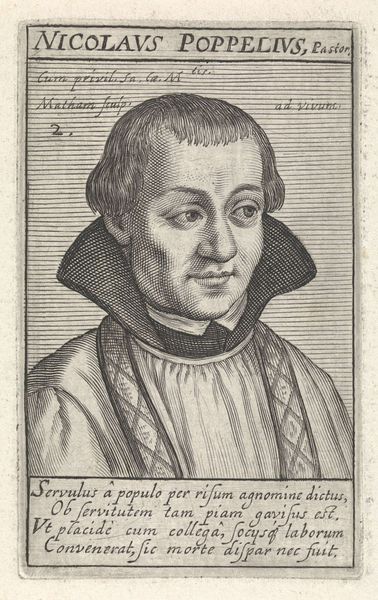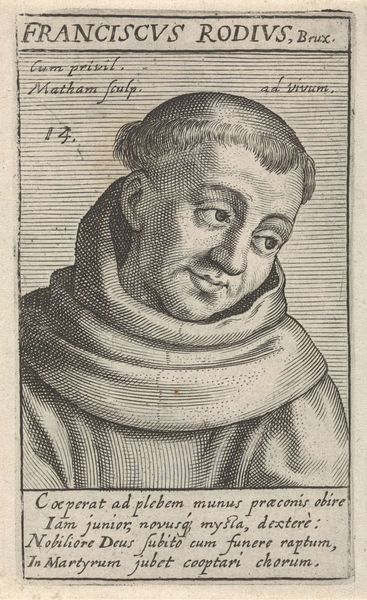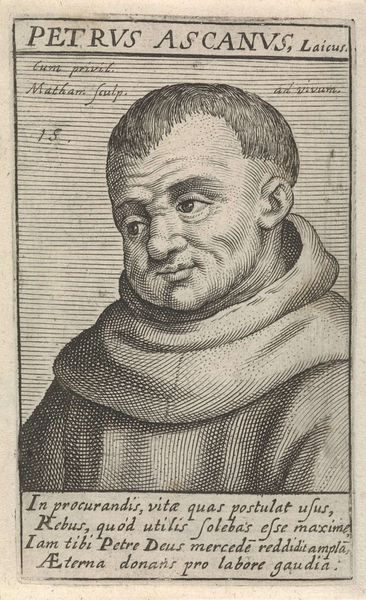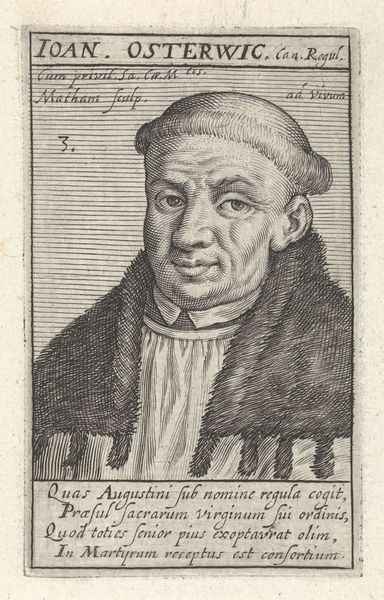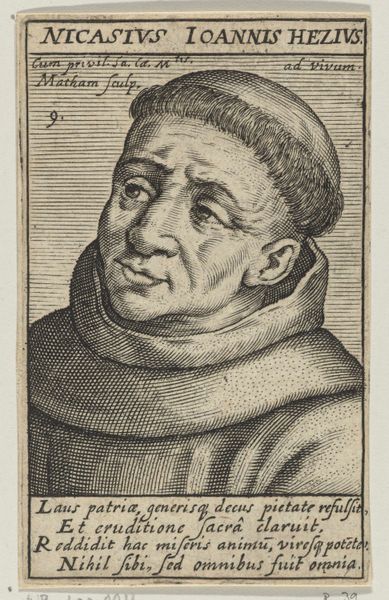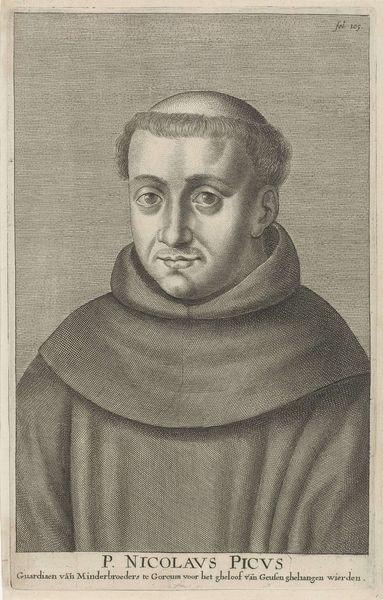
print, metal, engraving
#
portrait
#
baroque
# print
#
metal
#
old engraving style
#
portrait reference
#
pen-ink sketch
#
portrait drawing
#
northern-renaissance
#
engraving
Dimensions: height 98 mm, width 60 mm
Copyright: Rijks Museum: Open Domain
This is Portret van H. Adrianus Becanus, made by Jacob Matham, an etcher and engraver, sometime between 1571 and 1631. It's an engraving, meaning that the image was incised into a metal plate, likely copper, with a tool called a burin. The lines you see were meticulously carved, then filled with ink, and finally printed onto paper. Think of it as a very controlled form of scratching. The density and direction of the lines create shading and volume, bringing Becanus to life. Engraving was a crucial technology for disseminating images, acting as a kind of early printing press. Matham was not only an artist but also a skilled technician, embedded in a network of workshops and commerce. This portrait, therefore, is not just an image, but also a product of its time, reflecting the rise of print culture and the demand for reproducible likenesses. By attending to the material and process, we recognize this artwork’s place at the intersection of artistic skill, technological innovation, and social context.
Comments
No comments
Be the first to comment and join the conversation on the ultimate creative platform.

